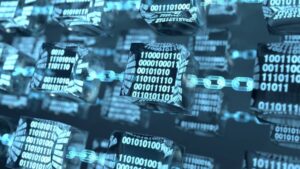Apollo’s Alpha: What are Ordinals and BRC-20 tokens, and why have they surged Bitcoin’s network activity?

Getty Images
David Angliss, an analyst with Australia’s leading cryptocurrency investment firm, Apollo Crypto, shares the fund’s regular take on what’s happening in the fast-changing and volatile cryptocurrency space.
Something big and unprecedented is happening around the Bitcoin network, and it’s causing a good amount of excitement. That said, it’s been easy enough to pass it by if your focus has largely been on Ethereum and perhaps the memecoin frenzy on that network just lately.
But a huge increase in Bitcoin blockchain activity happening at the moment can largely be put down to an increasing interest in Ordinals – Bitcoin’s non-fungible assets, which we’ve touched on in past articles – and a new fungible token standard called BRC-20.
In fact, it seems clear that a reasonable amount of the memecoin froth has shifted over to the Bitcoin network from Ethereum and that has everything to do with Ordinals and BRC-20s.
Not everyone is happy about it – it’s a divisive issue among Bitcoin proponents, as the significant uptick in activity has created network congestion and a level of transaction fees that hasn’t been seen in about two years.
That said, Bitcoin miners might well be digging the latest developments, as, for the first time since 2017, many of them are being paid more to process transactions on the blockchain than they are for creating new BTC. The latter is the far more difficult of the two profitable processes.
For the most part, though, as Apollo Crypto analysts David Angliss and Matthew Harcourt attest, the increased activity on the Bitcoin network could be viewed as a positive sign.
Here, they helped us dive into Ordinals and BRC-20s a little more to gain some further understanding.
What are Ordinals?
As Harcourt explains it in a recent Apollo report, “In essence, an Ordinal is a Non-Fungible Token (NFT) that is stored on the Bitcoin blockchain.”
They’re not exactly NFTs, but it’s the easiest way to think about them for those used to dabbling around on marketplaces such as OpenSea.
Ordinals, explains Angliss, are a numbering system for satoshis, which are the smallest increment/fraction of a Bitcoin. There are 100 million satoshis in every bitcoin.
“An NFT-like asset is created when a satoshi is linked to arbitrary content through a process called inscription,” writes Harcourt. “Users can inscribe a satoshi by submitting a transaction containing their desired content on the Bitcoin blockchain.”
That content can be anything from images, to GIFs, to video, to even a basic version of the original Doom video game, which someone recently “inscribed” as a unique Ordinal, adds Angliss.
Having first been inscribed (minted) in December last year after being created by the developer Casey Rodarmor, “Ordinals are a surprise development to Bitcoin as core contributors to the Bitcoin network never intended for NFTs to come to the Bitcoin blockchain,” notes Harcourt.
According to the Apollo analysts, Ordinals have some key advantages over NFTs, those being:
- They are highly decentralised and more secure, due to living on the Bitcoin blockchain.
- They’re difficult to censor.
- They’re more immutable than non-fungible assets on other chains such as Ethereum, which have a degree of connection to centralised file hosting.
- They’re fully on-chain by nature.
- A clear, sequential order of creation.
Regarding that last point, explains Apollo, unlike NFTs, Ordinal inscriptions are numbered in consequential order. “The lower the inscription number, the older the Ordinal is.”

There are now 4,784,470 inscriptions on Bitcoin, “which, as you can see from the Dune chart is a parabolic rise over the past few weeks,” says Angliss.
Ordinals just hit an ATH of $1,496,175 paid in fees to miners in a single day.
This obliterates the prior ATH of $803,635 from 4 days ago. pic.twitter.com/pQwog8yAo9
— Leonidas $DOG 🧡 OKX (@LeonidasNFT) May 6, 2023
What are BRC-20 tokens?
With the number of daily inscriptions increasing at an exponential rate, with a particular explosion in late April and early May, the question is, why is this happening?
“The growth can be attributed to the creation of the BRC-20 token standard in early March 2023,” notes Harcourt. “This token standard aims to bring fungible tokens onto the Bitcoin blockchain, the same way the ERC-20 token standard brings fungible tokens to the Ethereum blockchain.
“Each deployment, mint and transfer of a BRC-20 token is recorded as an inscription.”
The token standard’s founder, Domo, has described BRC-20s as “a fun experimental standard demonstrating that you can create off-chain balance states with inscriptions. It by no means should be considered THE standard for fungibility on bitcoin with Ordinals, as I believe there are almost certainly better design choices and optimization improvements to be made.”
Despite Domo downplaying the BRC-20 standard somewhat, these new Bitcoin-housed assets are clearly gaining in popularity, as can be seen in this brc20.io chart. The sub-class of crypto assets now has a total market cap of more than US$720 million.

And, adds Angliss, the fact the top BRC-20 assets are now beginning to see market caps push towards and above US$50 million (or in original BRC-20 Ordi’s case, above US$400m), demonstrates the high level of excitement and speculation that’s found its way to the Bitcoin network.
Ordi, incidentally, has even just been listed on a couple of large crypto exchanges – Crypto.com and Gate.io.
CEX listings bring much larger off-chain liquidity to BRC20 markets!$ordi listed on https://t.co/HZkq9AB4Pj, https://t.co/NgtyulBPrU, https://t.co/fOSHnGLkux
Huge for the legitimacy of this early market 🚀
— Smokes (@smokes_eth) May 8, 2023
You’ll notice a few memecoins on that list, including Pepe. Just a reminder, if it was needed, that this is a different asset/token from the Ethereum-housed Pepe that surged through a US$1 billion market cap recently.
This one already has a $53m market cap, however, and is proof (backed up by a good deal of the names of BRC-20s as you scroll down the list) that “memecoin season” has arrived on the Bitcoin blockchain.
Bitcoin maxis must be hating it.
BRC20 PEPE and other 'blue chip' BRC's being listed on a CEXs is programmed with this much easy volume to be captured
— Matthew Harcourt 🇦🇺 (@DeFiGuy3) May 9, 2023
How and where to dabble in BRC-20s
This obviously comes with the caveat that this is super risky territory, but no more so (and perhaps in some ways less so) than aping in on memecoins on other chains.
The 43-tweet-length megathread, below, from Crypto Twitterer Jameson Mah, gives a full and highly detailed explanation if you scroll down far enough.
Essentially, though, your first step to minting and trading BRC-20 tokens is to make sure you have some BTC in a Bitcoin-specific wallet compatible with the BRC-20 standard.
Unisat seems to be the product of choice for this at this point as it’s a mutlifunctional app that, among other things, serves as a wallet and a marketplace for BRC-20 tokens as well as a place to inscribe Ordinal non-fungible assets.
Closing thoughts
Criticism of “sh*tcoins on Bitcoin” from Bitcoin purists seems understandable when it comes to issues related to the blockchain’s congestion and rising transaction fees due to increased activity.
Overall, however, Apollo analysts Angliss and Harcourt both expressed that the development of Ordinals and BRC-20 are a net positive.
“Ordinals represent an exciting development in the Bitcoin ecosystem when compared to the previously rigid plan for the blockchain,” wrote Harcourt in his Apollo Crypto report.
“Ordinals may play a key role in solving Bitcoin’s longer term security problem in regards to using fee revenue only to pay miners once block rewards become insufficient to incentivise the network. This is because Ordinals are driving transactions and thus fees on the Bitcoin blockchain.”
“The fact these assets are allowing people to experiment more on Bitcoin is definitely creating more buzz around that blockchain,” added Angliss.
“Instead of just sitting on their BTC, holders can now deploy assets, buy, trade and speculate. Essentially, an Ethereum-like experience is developing on Bitcoin.
“As for Bitcoin maxis… I tend to think they should look to embrace anything that brings Bitcoin more attention and more transactions and fees. It contributes to a stronger network overall and probably ultimately contributes to increasing the number of Bitcoin holders and Bitcoin wallet addresses.
“As much as Bitcoin maxis might hate it, these developments are contributing to Bitcoin adoption.”
Despite the inconvenience of paying higher gas fees, in many ways an increase in fees is actually GOOD for the #Bitcoin network.
More fees = more rewards for miners, which incentivises $BTC mining (making the network more decentralised & secure). pic.twitter.com/UZZ7DEX8y1
— Miles Deutscher (@milesdeutscher) May 8, 2023
None of the contents of this article should be construed as financial advice.
UNLOCK INSIGHTS
Discover the untold stories of emerging ASX stocks.
Daily news and expert analysis, it's free to subscribe.
By proceeding, you confirm you understand that we handle personal information in accordance with our Privacy Policy.








